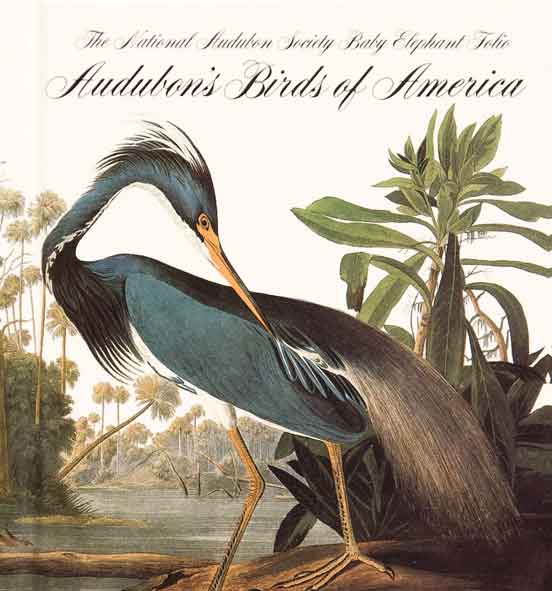Literature in Antebellum America

Birds of America
Until the nineteenth century, most of American culture was either imported from Europe or closely based on European models. In the antebellum period, however, American writers began working with American themes, and even developed an important literary genre - the short story. Although it seemed that an explosion of literary talent came upon the American scene, the development of a distinguished American literature was still slow. Americans, still accustomed to the works of European authors, were not quick to acclaim native-grown works to the same degree then as retrospect would later justify. Most American books were actually reprints of foreign books, especially those written by British authors. Among the most popular authors were Sir Walter Scott and, toward the end of the 1830s and 1840s, Charles Dickens. Dickens was so admired that his 1842 tour was greeted with great enthusiasm, although the tour took a tremendous physical and emotional toll on the Englishman.
The new American literature often dealt with American subjects. Histories and biographies of Revolutionary War heroes such as George Washington were popular. Memoirs and autobiographies were also frequently published, such as the autobiographies of Frederick Douglass, Sojourner Truth and P. T. Barnum. The California Gold Rush also inspired some literature, including David Ansted 's The Gold Seeker 's Manual, a Practical and Instructive Guide to All Persons Emigrating to the Gold Diggings in California (1849) and Daniel Woods ' Sixteen Months at the Gold Diggings, an 1851 nonfiction account of the gold rush in California. John James Audubon published his ornithological classic, The Birds of America (4 vols.), between 1827 and 1838. The most enduring reference book of the period was Noah Webster 's , American Dictionary of the English Language, finally completed in 1828. The two-volume Dictionary, which took more than 25 years to complete, contained 700,000 words. Webster 's "Blue-Back Spellers" continued to sell well.
American themes also appeared in works of fiction. Washington Irving 's The Sketch Book of Henry Crayon, Gent. (1819-20) contained stories set in the United States, dealing with the legends and popular folklore of the early Dutch settlers of New York. James Fenimore Cooper 's works, such as The Last of the Mohicans (1826), dealt with American situations and exploited the fashion for using Native Americans as characters. "Davy Crockett" was used as a pseudonym for a number of western stories, although the identity of the writer or writers was a mystery.
Americans seemed to prefer poetry to prose, perhaps for its ability to express noble sentiments on love, honor, patriotism and other elevated themes. Lydia H. Sigourney was hailed as one of the top American poets of the antebellum years, although her poetry seems rather dated to modern readers. Edgar Allan Poe was also a distinguished, although bizarre poet, whose works in both poetry and prose reflected the Romantic movement in American literature. William Cullen Bryant, who was also editor of the New York Evening Post, wrote "Thanatopsis," which was perhaps the first American poem to be widely read and acclaimed. Poet James Russell Lowell was also a literary critic, and author of The Bigelow Papers, in which he opposed the Mexican War and the institution of slavery. John Greenleaf Whittier 's poetry, including "Ichabod," also dealt with abolitionism, and some of his other works describe life in rural new England. Henry Wadsworth Longfellow is remembered for his epic ballads, such as "The Song of Hiawatha," which immortalized moments in American history. While the multi-talented Oliver Wendell Holmes wrote humorous poetry, his most widely read poem was the 1830 "Old Ironsides," which roused the nation to outrage against the destruction of the USS Constitution in the War of 1812.
Perhaps the most distinctive contribution of American antebellum literature was the genre of the short story, which would be further developed by other American writers in future years of literary history. Two of the most prominent figures in this genre were Washington Irving and Edgar Allan Poe. Irving, who thought that he would be remembered for his biographies of Columbus and Washington, is better known for creating the fictional character of "Rip van Winkle" and for the short story entitled, "The Legend of Sleepy Hollow." These stories are contained in The Sketch Book of Henry Crayon, Gent (1819-20). Edgar Allan Poe was known as a poet and editor during his lifetime, but later readers developed an appreciation for his short stories, including his famous (or infamous) mystery and horror stories such as "Murders on the Rue Morgue" and "The Tell-Tale Heart." Nathaniel Hawthorne 's Twice Told Tales (1837) also contributed many classics of American short fiction.
Americans wrote a number of important novels in the antebellum period. In 1840, Richard Henry Dana published Two Years Before the Mast, an fictionalized account of the difficulties of life as a sailor based on Dana 's own experiences. Nathaniel Hawthorne 's classics, The Scarlet Letter and The House of Seven Gables.
 >
>